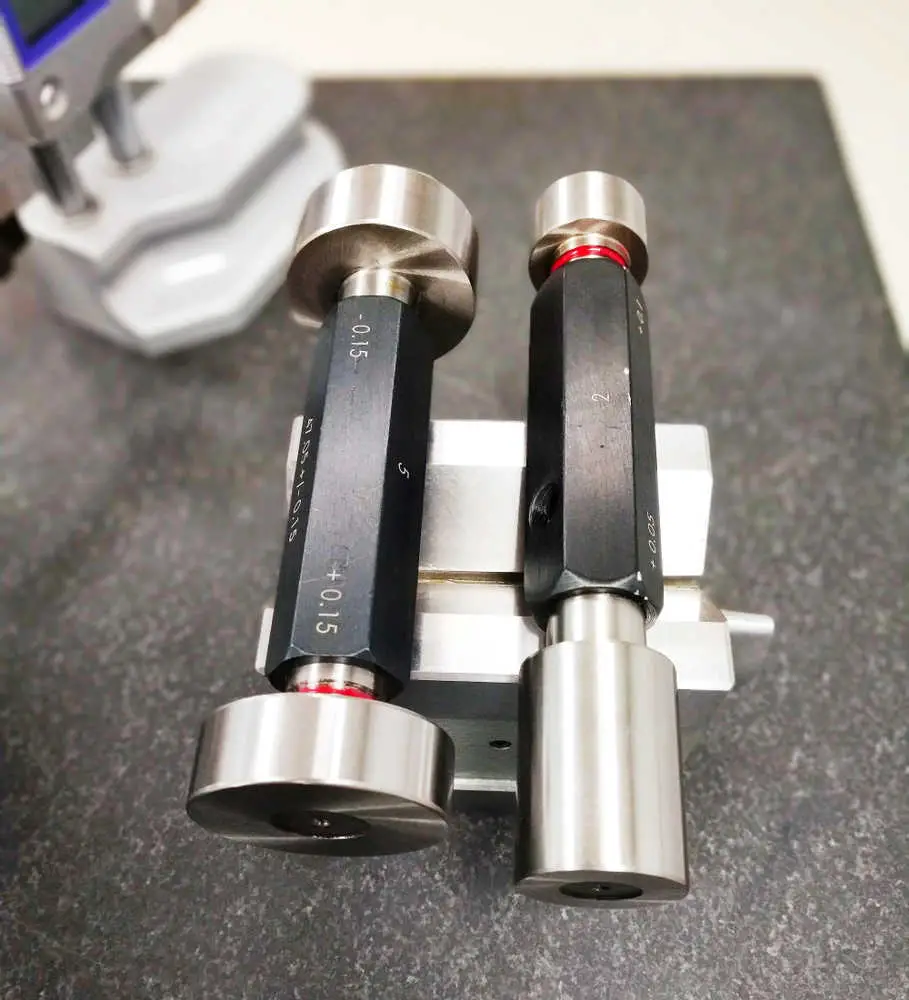You may wonder about the differences between the gauge and instrument. Both of them we use in many times and many places. In this post, we will briefly break down their differences.
1. Gauge
A gauge comes in a fixed dimension which has only a single readout. For example, a single feeler gauge comes in a 0.035-inch thickness and it’s its readout. When we apply that .035-inch feeler gauge in a gap, it cannot let us know whether a gap is .034 inch or .036 inch in thickness. But, logically it gives us an indication that a gap is more than .035-inch when we are able to get the feeler gauge inside the gap.
Another example of a gauge is the gauge block. Each block is designed to be a single readout. This block cannot measure any value except that single readout. A 0.5-inch block gauge is used to indicate whether micrometers and calipers correctly present a reading of 0.5 inch. It cannot determine whether it’s 0.55″ or 0.45″.
There are no several graduations, only one reading for a single unit of gauge.
Advantages:
- Speed. A gauge allows you to quickly assess the object dimensional property whether it matches the required specification or not.
- Easy to carry. Commonly it’s made of metal. It allows you to carry it everywhere.
Disadvantages:
- Error. It’s not made for high accuracy. If it’s made of metal, heat expansion may change slightly the internal material shape of the gauge. As a result of material expansion, the length or thickness or width or area may increase. It counts to error.
- Hard to calibrate. If the blade (feeler gauge) is broken, it’s hard to fix. The thickness may change significantly. You are better off buying a new one.
Examples:
- Feeler gauge. Feeler gauge commonly comes as a set.
- Try square. This is to measure how 90-degree a certain angle. We use it in woodworking and metalworking.
- Block gauge. We use it in the calibration of micrometer, dial indicator, test indicator, and even caliper.
- Snap gauge. This tool functions to check whether the outside dimension (can be outside diameter, outside width, outside length) of a particular object matches the specification that we require.
- Ring gauge. Ring gauge is to check especially the
- Screw gauge.
- Metal sheet thickness gauge.
- Wire gauge. To measure the thickness of a wire.
- Plug gauge (Go/No-go plug gauge)

2. Measuring Instrument
On contrary, a measuring instrument comes with a scale or some graduation. This scale lets you know exactly the physical value of an object.
You can directly read the readout because the scale starts from 0 to the maximum range. In addition to the reading, it allows you to know the measurement value down to its smallest reading (resolution). As a result, you can get variable readout when measuring a certain object with this instrument.
However, in some case, a measuring instrument can be used as a gauge as well. For example, dial indicator, dial test indicator, and dial caliper. By adjusting the bezel, you can analyze that the runout value of a certain object falls under your specification or not.
Advantages:
- Very informative measurement. You can gather information as informative as possible from a measurement. The measurement is detailed because it has great resolution.
- Easy to calibrate. It’s easy to calibrate a measuring instrument if it’s used for a gauge.
Disadvantages:
- Expensive. If a measuring instrument is used as a gauge, that’s too overkill. Buy a precision instrument to get detailed reading.
Examples:
There are tons of examples of measuring instrument
- Micrometer
- Caliper (vernier, dial, and digital caliper)
- Indicator (Dial and Test)
- Multimeter
Conclusion
Those are the differences between the gauge and measuring instruments. Understanding these two different tools will allow you to pick the right tool for the right use. If you need to take the measurement value, use the measuring instrument. If you want to know a certain object that falls under a single fixed value, use the gauge. As simple as that. Thank you.
